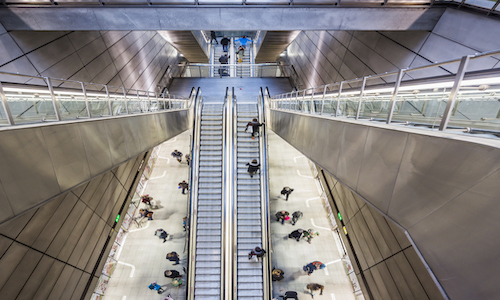The human eye can’t monitor every detail captured by the world’s proliferating number of surveillance feeds. But AI-trained computers can, and that makes them an important enabler for public safety initiatives.
As the volume of video footage, threats and people increases, traditional methods of monitoring CCTV are struggling to keep up. Surveillance cameras worldwide have ballooned to an estimated one billion. While certain crimes have decreased in recent years, others are increasing as the world population grows by about one billion annually. The Council on Criminal Justice reports, for example, that though the number of homicides declined by 2% in the first half of 2022, compared to the first half of 2021, the homicide rate is 39% higher than it was in the first half of 2019.
Municipalities, schools, airports, event venues, and other organizations want to avoid becoming the next target of attack. Computer vision is entering the picture, often as a component of a broader smart city initiative, to bolster defenses.
ID’ing Crime Hot Spots
Computer vision trains computers to recognize and interpret images the way people do but on a much larger scale. Integrated into an ecosystem of distributed digital cameras, processors, networks, and applications, it continually gathers and correlates situational data from multiple locations. The intelligence it generates helps people make sense of a flood of images, get a handle on circumstances, and act appropriately and swiftly.
Some applications help predict and prevent crime. For example, computer vision systems can recognize potentially dangerous objects, such as an unattended suitcase in an airport or a weapon in a crowd, and alert first responders. They can also determine how long an unattended object has been there and, usually, identify who left it.
Integrated visual analytics systems combine and assess all the data generated from cameras, drones, wearable devices, and other sources to pinpoint a wide range of situations. Training algorithms using prison records, social media data, and news reports combine with facial recognition to help track down fugitives, persons of interest, and missing people, for example. Drone networks can “see” emergency situations during natural disasters and dispatch first responders to help prevent the loss of life and property.
Advantages of a Partner Ecosystem
Getting started with a prospect interested in visual analytics for public safety involves an upfront assessment of what the organization would like to achieve, its perceived challenges, and potential technology components. It also helps to define how the organization would measure the success of the project and whether it’s likely to be part of a smart city initiative, which may be on the drawing board or already in the works. If the latter, integration with existing digital solutions will be a consideration.
Because it’s difficult for a single provider to supply all visual intelligence system components, Hitachi has created a partner ecosystem that allows individual solution providers to contribute their areas of expertise. The Hitachi Lumada Solution Hub provides a community whose cumulative value enables partners to meet each customer’s requirements.
To learn more, download the Hitachi Lumada brochure.
Image Source: Hitachi Vantara / Getty Images

